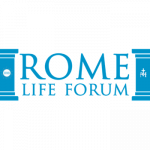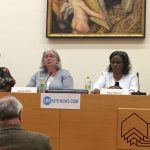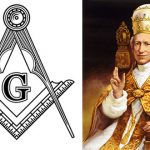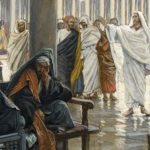Written by Kathy Clubb
Today the Australian High Court unanimously acquitted Cardinal George Pell of historic child abuse charges. Cardinal Pell was charged with the ignominious crime in June 2017, convicted in December 2018 and lost his subsequent appeal last August . His case was heard in the High Court in March of this year. Cardinal Pell was incarcerated for more than four hundred days and was unable to celebrate Mass in that time.
Cardinal Pell’s arrest and conviction were initially hailed by Australia’s secular media and by much of the public as a triumph for justice, but over time, more and more began to question the validity of this conviction. Agnostic non-Catholic commentators like Mark Latham, Amanda Vanstone and Andrew Bolt championed the Cardinal’s cause to an anti-Catholic public. It was becoming obvious to anyone who studied the case that the crime could never have happened in the manner described by Pell’s accuser.
Many Vatican insiders around the world were astonished by the outcome, with subsequent articles written about the possible connection between Cardinal Pell’s work done in Rome and the outrageous charges. George Weigel,[1] Phil Lawler,[2] Marco Tossati[3] and Edward Pentin[4] and others outspokenly defended Cardinal Pell and asked if he was being set up to keep him from exposing the extent of corruption in the Vatican.
In March last year, Vatican insider Marco Tossati wrote an article entitled, “The cannons in Australia, the bullets manufactured in the Vatican.”[5] By this, Tossati referred to remarks he had heard from several clerics in Rome – that while Cardinal Pell’s charges were for a crime he purportedly committed in Australia, the prime movers behind ‘Operation Get-Pell’ are to be found in Rome.
This article will focus on the tensions that existed between Cardinal Pell and various members of the Curia before his charges were made public. Much of the following information is taken from “The Dictator Pope”, a book by Henry Sire and originally written under the pseudonym Marcantonio Colonna, the accuracy of which is confirmed by reputable Vatican insiders. The footnoted data is from my own research.
It is obviously unwise and unjust to accuse any of the following men of conspiring to frame Cardinal Pell for the crime of which he has now been acquitted. The purpose of this exposé is rather to delve into the toxic atmosphere that pervades the Vatican’s financial bodies, and to consider how many have benefitted from having His Eminence disgraced and safely in prison, thousands of miles from Rome.
Pope Francis begins financial reforms
Cardinal Pell was appointed head of the newly-created Secretariat for the Economy in February of 2014 by Pope Francis. Two existing financial entities that would work with this new Secretariat were APSA (Administration of the Patrimony of the Apostolic See) and the IOR (Institute for the Works of Religion, also erroneously known as the Vatican Bank.) Until that time, the Vatican’s purchasing and human resources had been managed by APSA, but under Pell, that became the responsibility of the new Secretariat. APSA retained control of the Vatican’s real estate holdings as well as its stock and bond portfolio.
Jean-Baptiste de Franssu, a layman from France, was the president of IOR and had a good working relationship with Pell. Pell also felt he had the support of the Pope for his plan of rigorous accountability and upgrading of governance to internationally accepted accounting standards.
One of the first major shake-ups in the reform process was Cardinal Pell’s discovery of 936 million euros belonging to various dicasteries which wasn’t recorded in the balance sheets. After a year of investigation, this amount increased to 1.4 billion euros.[6]
As Cardinal Pell said in an interview with Andrew Bolt, :“They’ve closed three or four thousand accounts of people who had no right to have an account there because the danger is those accounts were being used for money laundering. Who knows if it’s the Mafia or some other criminal organisation? That’s very difficult to establish.”[7]
This disclosure created immediate repercussions: Vatileaks Mk II. The Italian magazine, L’Espresso, published a story criticising Cardinal Pell for exceeding his department’s budget on unnecessary items including extravagant vestments. The Secretariat for the Economy then released a statement explaining that it was actually operating under budget and amusingly, that Cardinal Pell did not own a Cappa Magna.[8]
By April of 2016, Vatican journalist Ed Pentin noted that the Secretariat’s rigorous auditing was “unnerving” some Vatican employees.”[9] A month later he wrote that “Cardinal Pell has many enemies in Rome who never wanted him there and who would love to see him leave.”[10]
The Four Horsemen
According to Henry Sire, there were four cardinals particularly hostile to Pell and his reforms: Cardinals Calcagno, Versaldi, Bertello and Parolin; the former three were appointed by Cardinal Bertone when he was Secretary of State. Cardinal Bertone would be well-known to readers for promulgating the highly controversial “Third Secret of Fatima.”
Domenico Calcagno was particularly controversial. He was appointed President of APSA in 2011, which was surprising, given that some of his real-estate transactions as Bishop of Savona had attracted the attention of the Italian authorities. Additionally, it was well-known that Calcagno had failed to appropriately handle the case of a sexually-abusive priest in his former diocese.
His activities were so destructive that Cardinal Pell asked Pope Francis to have Calcagno dismissed on numerous occasions.The Pope replied that he would do so if evidence could be found of Calcagno’s misdeeds, but although a great deal of evidence has been submitted to the Pope, there has been no retribution for Calcagno. In fact, Calcagno’s power has increased since he has taken back control of some assets which had been transferred to Pell’s Secretariat for the Economy.
The antics of Cardinal Giuseppe Versaldi were little better. It was discovered in 2014 that he had attempted to hide from the Pope the misappropriation of 30,000,000 euros from the Bambino Gesù Hospital. After the revelation, Versaldi kept his position as President of the Prefecture of Economic Affairs until 2015. Far from being reprimanded, Versaldi was then appointed by Pope Francis to the position of prefect of the prestigious Congregation for Catholic Education.
Cardinal Giuseppe Bertello was made President of the Governorate of the Vatican City State in 2011. He is known for consistently obstructing the reform Commission from gaining access to his financial records.[11]
Pietro Parolin
Cardinal Parolin’s relationship with Pell deserves an enquiry all of its own. Parolin was appointed by Pope Francis in 2013 to the very high ranking position of Secretary of State and is known for his outspoken opposition to the Pope’s apparent efforts at financial reform. Parolin recognised Pell’s threat to his enormous power from the beginning and strangely, the Pope has done little to stop Parolin’s undermining of Pell’s work.[12]
Their first clash came even before Cardinal Pell set about his financial reforms. According to Francesca Chaouqui, a Vatican employee charged over the second Vatileaks scandal, Parolin was incensed that Cardinal Pell went ahead and drew up the framework for the Secretariat for the Economy without his knowledge.[13]
In 2014, they butted heads again. Against the wishes of Cardinal Pell, Parolin arranged with Cardinal Donald Wuerl to secure a loan from the Papal Foundation to prop up the ill-fated IDI hospital. The loan involved disgraced former Cardinal Theodore McCarrick who made sure it was approved over the objections of the other members of the Papal Foundation board. IOR, under the leadership of Franssu, had already vetoed the loan[14] and both Franssu and Cardinal Pell had agreed that there was no way the money could be repaid. In 2019, Cardinal Parolin took full responsibility for the disastrous loan; APSA had been eventually forced to write 30 million euros off the loan, meaning that it was unable to post a profit for the 2018 financial year.[15]
The 2014 & 2015 Synods
The Extraordinary Synod held in October 2014 has been widely criticised for its heterodox proposals, its rigged outcomes and for the hijacking of the discussion by Modernist forces. Cardinal Pell was one of its most outspoken critics and contributed to a book on Catholic marriage – along with Cardinals such as Burke, Müller and Napier – designed to correct the crooked path down which the synod was heading.
Cardinal Pell issued a particularly scathing assessment of the Relatio, the document which was supposed to represent the whole gamut of opinions of the synod fathers but which was instead an apologia for the heresies of Cardinal Kaspar’s cabal.
Even before the Synod, Pell had written the foreword to a document from the now-defunct John Paul II Institute, which was entitled, “The Gospel of the Family: Going Beyond Cardinal Kasper’s Proposal in the Debate on Marriage, Civil Re-Marriage and Communion in the Church.”
Tensions continued into the following year, when it became known that copies of the conservative Cardinals’ book, “Remaining in the Truth of Christ” had gone missing during the October synod – a copy was meant to have been sent to every synod father.
A similar trajectory was followed at the Ordinary Synod of 2015 and thirteen Cardinals, including Pell, were so concerned that they wrote to Pope Francis asking for his intervention to steer the Synod processes back onto course. This request was apparently received quite ungraciously and the Synod proceeded on its rocky course, until at last, the infamous encyclical, Amoris Laetitia was released, confirming the fears of both the Cardinals and of many orthodox Catholics around the world.[16]
A closer look at APSA
“The Dictator Pope” reveals how APSA set itself up as an alternative Vatican bank while the IOR was enacting reforms, promising private clients better returns on their investments than IOR. APSA had been assisting wealthy clients by channelling their money into Swiss bank accounts and thus they were avoiding having to pay tax to the Italian govt. Cardinal Calcagno is known to have concealed irregularities by hiring expensive professionals and also ensured that APSA was not subject to the reforms which targeted IOR.
In order to get to the bottom of the multiple financial irregularities, Cardinal Pell called for a comprehensive audit by Price Waterhouse Coopers of all of the financial entities at the Vatican in 2015. The audit was suddenly suspended after four months, then finally cancelled in June of 2016, when Cardinal Parolin announced that the Secretariat of State would not undergo an audit. This cancellation was made without any consultation with Pell’s Secretariat.
In April 2016, a new financial scandal hit the press. It came to light that a valuable real estate portfolio acquired by APSA in 2001 had become a 700,000 euro deficit. The portfolio included around 300 properties, most of which were in Rome; many were rented out for extremely low rent, some were abandoned, some rents had never been collected. This resulted in the portfolio being transformed from a lucrative income source into a huge debt.
Just a few months later, an unexpected motu proprio from Pope Francis suddenly reduced the powers of the Secretariat for the Economy to a merely supervisory capacity. This meant that Cardinal Pell’s staff were left without job security, being once more under the control of APSA.
As stated above, there were few moves from within the Vatican to correct proven misappropriation and mishandling. This can be contrasted with severe punishments meted out to those involved in exposing this corruption by leaking evidence to the press.
Tensions escalated in May 2017 when APSA authorised a comprehensive audit along the lines of the one previously vetoed by Cardinal Parolin. Letters were sent to Vatican departments by Monsignor Rivella, who claimed, erroneously, that the Secretariat for the Economy had authorised the audit. Cardinal Pell and the auditor-general, Libero Milone, were forced to reverse the order.
Things took a turn for the worse a few months later when Milone was forced to resign. His offices were ransacked by the Vatican Police and Fire Department and he was subjected to a lengthy interrogation. It later became known that Milone had uncovered some sensitive financial secrets including the alleged diversion of funds from Peter’s Pence to Hillary Clinton’s presidential election campaign. It is to be noted that Milone’s dismissal came at a time when the Secretariat of State knew that Cardinal Pell was about to be charged with historical child sexual abuse. It is not too long a bow to draw, in suggesting that Milone’s enemies felt secure in silencing him because his ally, Pell, would soon be caught up in his own troubles.[17]
Cardinal Pell remarked in May of 2017 that “… the Vatican could be approaching the “moment of truth” in the economic reforms.”[18] Just six weeks later, he was charged with historical child sexual abuse offences.
Pell and the Pope
The Pope is said to have disliked Cardinal Pell’s strength and independence, preferring weak men over whom he can exercise control. For his part, Pell had little faith in the Pope’s ability to reform finances, administration or even the culture of pedophile priests.
Sires points out that a false narrative was circulating about the Pope and his Curia during Cardinal Pell’s time in Rome. This narrative suggested that Francis was the Great Reformer whose progress was continually being impeded by Vatican ‘conservatives’. However, insiders say that is far from the truth.
“Inside the Curia, everyone knows exactly who Cardinal Pell’s enemies are and that they derive their power from the favour shown to them by Pope Francis.”[19]
Conclusion: Rome’s bullets
Cardinal Pell is said to have written much during his time in prison – his ‘spiritual reflections’. Will he next write his memoirs – an in depth analysis of his time in Rome and the events which led to his arrest? Will he give interviews? Launch a case against VicPol for its vendetta against him? Will he be free even to remain in Australia, given the level of hostility that still remains against him? What will Rome have to say now that he is free?
Marco Tossati speculates that when the ‘bullets’ were first being prepared for Cardinal Pell, his disgrace would have done little damage to the Vatican’s reputation. However, after years of moral and financial scandals, not to mention grave spiritual upheavals, the case of Cardinal Pell is a thorn in the side of Rome, in more ways than one.
Now that his conviction has been quashed, it remains to be seen what new information comes to light. It’s obvious from the many anonymous comments given to journalists Ed Pentin and Ed Condon and of course, to Henry Sire for his book that there are a great number in Rome who know dark secrets about “the getting of Pell”. The fact that they remained nameless gives weight to the suspicion that there are serious repercussions for those who break rank and implicate the Curia in wrongdoing. For those who have no scruples about misappropriating millions, it is hardly a burden to silence a witness.









